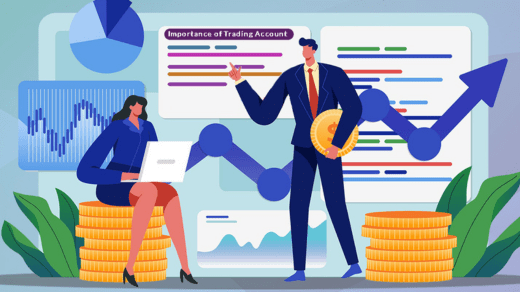
Certainly, here are 15 points discussing the pros and 15 points discussing the cons of day trading and investing in terms of profitability:
Day Trading – Pros:
- Short-Term Profit Potential: Day trading aims for quick, short-term profits, allowing for potentially high returns.
- Liquidity: Day traders often focus on highly liquid assets, making it easier to enter and exit positions.
- Intraday Trends: Day traders capitalize on intraday price fluctuations and trends.
- Risk Management: Day traders can manage risk more closely by using stop-loss orders and position sizing.
- Adaptability: Day traders can adjust strategies quickly in response to changing market conditions.
- Diverse Markets: Day trading can be applied to various markets, including stocks, forex, and cryptocurrencies.
- High-Frequency Opportunities: Intraday trading provides numerous opportunities for active traders.
- Potential for Income: Skilled day traders may generate consistent income from trading.
- Focus on Technical Analysis: Day traders often rely on technical analysis, which can be effective in short-term trading.
- Reduced Overnight Risk: Day traders avoid overnight risk associated with holding positions.
- Active Learning: Day trading encourages continuous learning and improvement.
- No Long-Term Commitment: Day trading doesn’t require a long-term commitment to specific assets.
- Emotion Control: Day traders develop emotional discipline by adhering to strict trading plans.
- Accessibility: Online trading platforms make day trading accessible to a wide range of traders.
- Tax Benefits: Some regions offer tax advantages to day traders, such as lower tax rates on short-term gains.
Day Trading – Cons:
- High Risk: Day trading is highly speculative and carries a significant risk of losing capital.
- Stressful: The fast-paced nature of day trading can be emotionally taxing and stressful.
- Time-Consuming: Successful day trading requires full-time dedication and monitoring of markets.
- Transaction Costs: Frequent trading can lead to higher transaction costs and commissions.
- Information Overload: Day traders must process vast amounts of data and news in real-time.
- No Guarantees: Even with skill, day trading doesn’t guarantee consistent profitability.
- Psychological Pressure: Day traders face psychological pressure to make quick decisions.
- Market Noise: Short-term price fluctuations can be noisy and challenging to interpret.
- Margin Risks: Using leverage in day trading increases both potential gains and losses.
- Regulatory Compliance: Day traders must adhere to regulatory rules and requirements.
- Limited Portfolio Diversification: Focusing on short-term trades may limit portfolio diversification.
- Burnout Risk: The intense nature of day trading can lead to burnout over time.
- Technical Issues: Trading platforms may experience technical glitches or outages during crucial moments.
- Market Manipulation: Smaller market capitalization assets are more susceptible to manipulation.
- Tax Complexity: Tax reporting for day trading can be complex, with potential tax liabilities.
Investing – Pros:
- Long-Term Growth: Investing focuses on long-term capital appreciation and wealth accumulation.
- Diversification: Investors can diversify their portfolios across various assets and industries.
- Compound Returns: Investments can benefit from the compounding of returns over time.
- Lower Transaction Costs: Investors typically incur lower transaction costs compared to day traders.
- Reduced Stress: Investing allows for a more relaxed approach, reducing emotional stress.
- Passive Income: Dividend-paying stocks and other investments can generate passive income.
- Time Efficiency: Investing requires less time and attention compared to day trading.
- Tax Benefits: Long-term investments may qualify for lower tax rates on capital gains.
- Lack of Pressure: Investors have less immediate pressure to make rapid decisions.
- Historical Performance: Historical data shows that long-term investments can yield substantial returns.
- Compounding Dividends: Dividend reinvestment plans can accelerate wealth accumulation.
- Emotional Stability: Investing promotes emotional stability with a focus on long-term goals.
- Access to Growth: Investing provides access to the potential growth of established companies.
- Reduced Margin Risks: Investors typically use lower leverage, reducing the risk of margin calls.
- Tax-Efficient Strategies: Investors can employ tax-efficient strategies to minimize tax liabilities.
Investing – Cons:
- Long-Term Commitment: Investing requires a long-term commitment to assets, limiting flexibility.
- Limited Short-Term Gains: Investors may miss out on short-term profit opportunities.
- Market Downturns: Investments can experience prolonged declines during market downturns.
- Uncertainty: Long-term investments are subject to economic, geopolitical, and market uncertainties.
- Lower Liquidity: Some long-term investments may have lower liquidity, making it harder to exit positions.
- Delayed Returns: Investors may need to wait years to realize significant returns.
- Risk of Underperformance: Poorly chosen investments may underperform the market or other asset classes.
- Opportunity Cost: Capital tied up in long-term investments may miss out on other opportunities.
- Psychological Patience: Investors must exhibit patience and discipline during market fluctuations.
- Limited Passive Income: Not all investments provide immediate passive income.
In conclusion, day trading and investing have their own sets of advantages and disadvantages in terms of profitability. The choice between them



